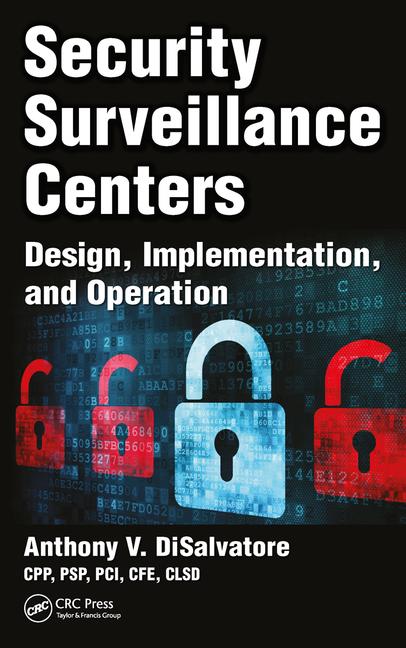Intercoms for security have changed in recent years, particularly with the advent of IP, mobile apps and increased integration. But other things have changed the intercom as well. The proliferation of mass shootings on campuses and office buildings has led many end users to lock the front door or gate, often relying on intercoms to identify who is outside before allowing them entry.
“Intercoms, emergency phones and two-way communications are an increasing need for end users,” says David Clark, American Threat Assessment Consulting Inc. (ATAC Inc.), Rancho Cucamonga, Calif. “We are seeing an increase in intercoms used for emergency call stations, as well as for two-way communication with potential threats.”
Ross Linville, owner, Security 101-Orlando, has seen a similar trend. “I am seeing more and more requests for intercoms over the past year than I have seen in a long time. Customers are wanting to keep their front doors locked at all times now, instead of just after-hours. And they like … being able to tie into their existing SIP system and being able to configure any way they like.”
What this means for the security integrator is more opportunity for intercom projects and increased integration with other security elements.
SDM spoke with Clark, Linville and other security integrators about recent trends, challenges, projects — and advice on designing, installing and selling security intercoms.
Intercom Applications
Karen Boshear, Cochran Security: A customer with multiple sites needed support with after-hours access to buildings throughout the Puget Sound. Each satellite site was fitted with an intercom that could call tenants locally via a scroll menu. If the tenant did not answer, it would roll the call over to a central monitoring location which could also give support. A side benefit to this was the ability to contact people viewed through a security video system that appear to be loitering.
Robert Suszynski, Identify Inc.: We deployed several intercoms and blue phones across multiple parking lots and surface lots that all communicate on the same network in a district setting. There is also an integration with video call-up though the camera VMS system when the intercom is pressed.
David Clark, ATAC: We are currently adding IP stations with integrated cameras and technology to a legacy system. The challenge is not only getting both technologies to communicate, but finding a way to upgrade the legacy stations. Typically that means a converter or completely upgrading the type of communications being used. Many times since pathway can’t be reused it means using an alternate form of communications due to cost.
SDM: What trends have you seen in terms of how intercoms are being used or what end users are asking for?
Karen Boshear (project manager, Cochran Security, Seattle): With the current technology and support for edge devices, intercoms are now performing customer support in garages and open areas with informational requests. They are able to support analytics that can recognize specific sounds and issue automated alerts. We are also seeing alerts to protect employees and customers from injuries from active incidents, redirecting people to safety.
Robert Suszynski (account manager/principal, Identify Inc., Royal Oak, Mich.): A lot of people are asking for a mobile app with two-way audio and video. This gives end users the flexibility to roam and not be locked to their desk to receive the call and communicate.
Rich Montalvo (owner, Security 101-Fort Lauderdale, Miami and Palm Beach, Fla.): Intercoms are becoming part of the overall security plan and integration to their existing SIP phones systems is a requirement. Most clients want the intercom to ring into a hunt group or desk phone without adding additional devices on a desk.
SDM: What has been the biggest change in intercom technology recently?
Montalvo: The expansion of SIP-compatible devices and IP intercoms. The days of closed systems are quickly becoming a niche product for specific applications. Enterprise users understand the value of IP intercom devices.
Clark: Going from analog phones to IP/SIP audio is the biggest change. While this is an advantage for us, the potential integrations involve more parties now than before. We can no longer just work with a security group and grab a phone line; we need direct involvement and buy-in from IT departments. This clearly opens the door to many options [such as] mobile communications, camera with MIC, access control confirmation, tracking and much more. Choosing a platform that incorporates it all is key and many times not an option as key systems are typically chosen prior to audio.
SDM: What are your biggest challenges when it comes to intercoms?
Montalvo: Background noise is many times a consideration, especially in outdoor environments. An intercom that can handle the ambient noise should be a consideration in your design.
Boshear: Installation and tuning. The installation of the current generation of intercoms often replaces older systems with obsolete infrastructure cabling. Distance can be a challenge, requiring extenders and/or media converters. The cabling can also sometimes cost more than the intercom hardware, so they are often overlooked. Tuning is [rarely] performed and becomes an issue when a system is installed and not adjusted for the environment it resides in. Once occupancy takes place, surrounding noise levels are often unforeseen. Some systems offer self-tuning that automatically adjusts for the ambient levels introduced.
Clark: The biggest challenge probably is locking down how we will communicate on the owner’s network and who will take ownership. Ideally this is a separate system with failover; but that is rare, which means we are riding on the owner’s phone system or network. Knowing that, how do we communicate and are phone licenses from the owner required? Security doesn’t typically issue phone numbers or VoIP licenses, so who do we need to buy in?
SDM: What advice would you offer other security integrators in terms of selling or installing intercoms?
Steven Turney (security program manager, Schneider Electric, Dallas): Work closely with the IT groups and clearly understand the cyber security aspects of the systems.
Montalvo: I feel it’s important to discuss the communications needs of a client. I find that many times a client is so focused on the video and access portion of the project they seldom give a thought to allowing access for guests and what that experience will look like for the guest as well as the employee allowing them access.
Linville: I would suggest really getting to the needs of the customer, and trying to find out what they envision the intercom system doing for them. I would also recommend getting the IT department involved in the very early stages since. And find out the details of their SIP system and what their current feature sets are. It’s better to find out those answers beforehand, than after the install takes place.
More Online
For more on intercoms visit SDM’s website where you will find the following articles:
“3 Recommendations for Making the Most of Today’s Intercoms”
www.SDMmag.com/making-the-most-of-todays-intercoms
“Integration, Audio & Video Drive Intercom Advances”
www.SDMmag.com/integration-audio-video-drive-intercom-advances
The Limitless Possibilities of IP-Based Entry Control & Emergency Stations
www.SDMmag.com/limitless-possibilities-of-ip-based-entry-control-emergency-stations
“Top 3 Questions Security Integrators Should Ask Before Jumping Into Commercial Audio”
www.SDMmag.com/3-questions-security-integrators-should-ask-before-jumping-into-commercial-audio















